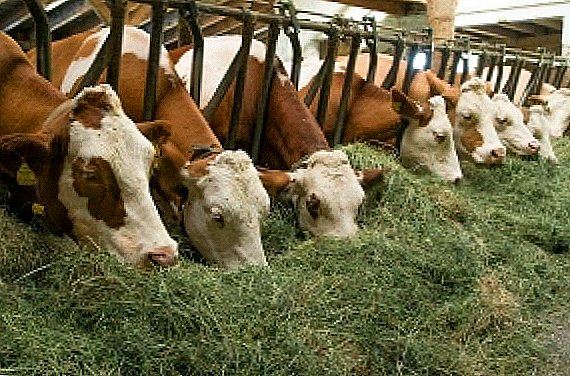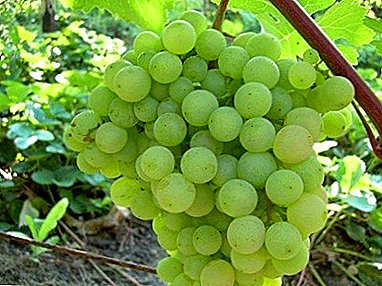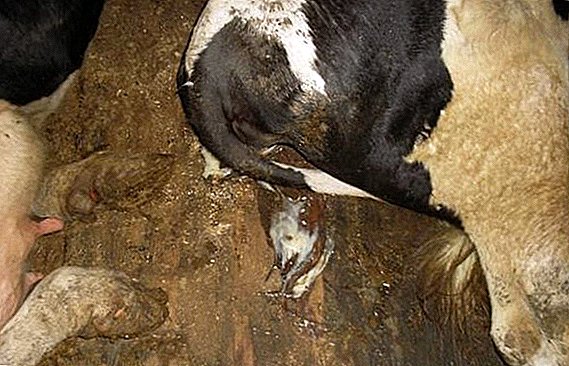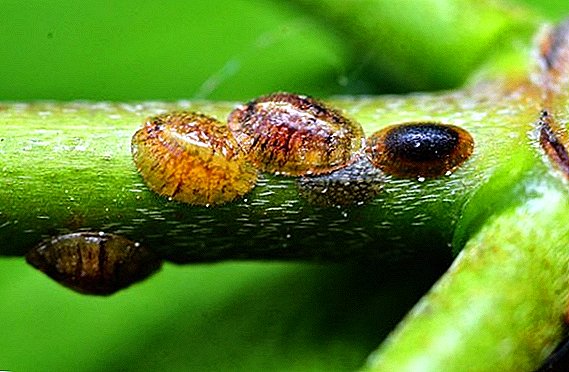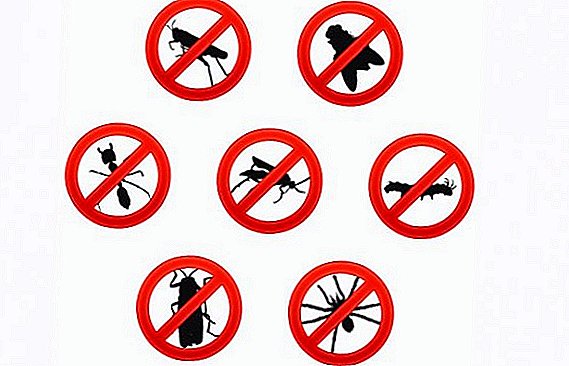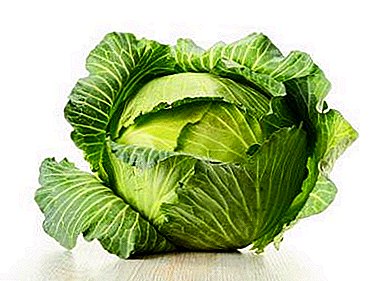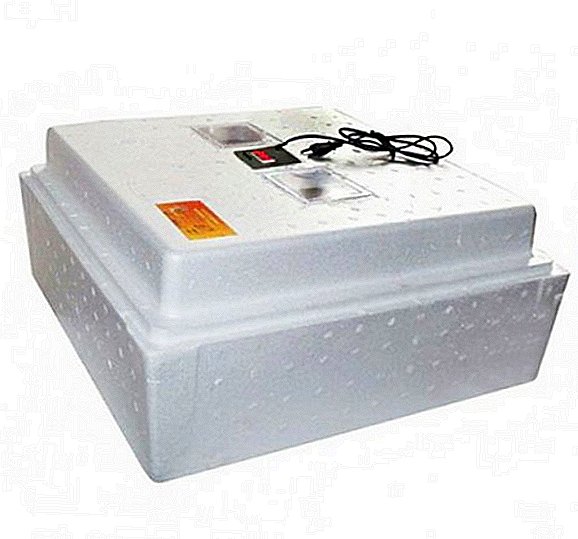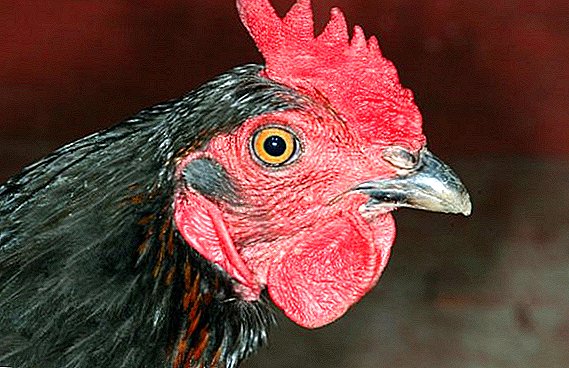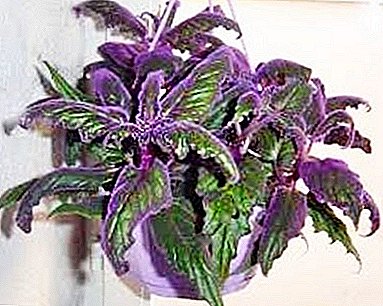
The plant "Gynura" is found in nature in a hundred species.
His homeland is considered the island of Java, but believe that it could appear in some areas of Asia and Africa.
"Ginura Orange" - a very common form. It is used to decorate the garden, and for growing in the room.
General description of the plant
"Ginuru Orange" refers to the shrubs. She does not lose green color throughout her life.
Approximate growth - about a meter. Stalks are spinning and needing a backup.
The leaves are green and ovoid. Feature - purple hairs, creating a velvet effect.
From spring to autumn on the guinure, you can find the inconspicuous flowers of yellow-orange hue. They are collected in inflorescences. We also recommend that you familiarize yourself with the description and rules of care for Ginura Pletnechnaya, which are described here.
A photo
The photo shows the plant "Ginura Orange" with proper care at home: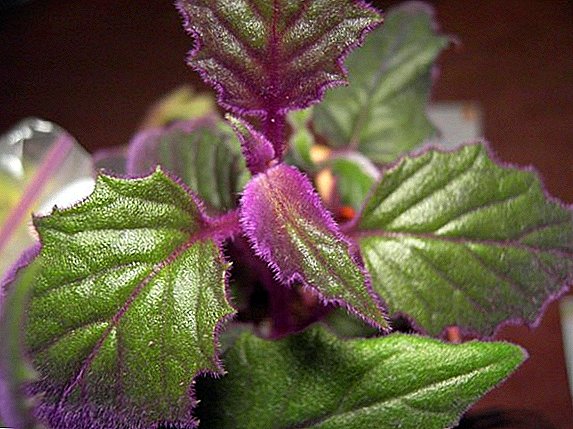
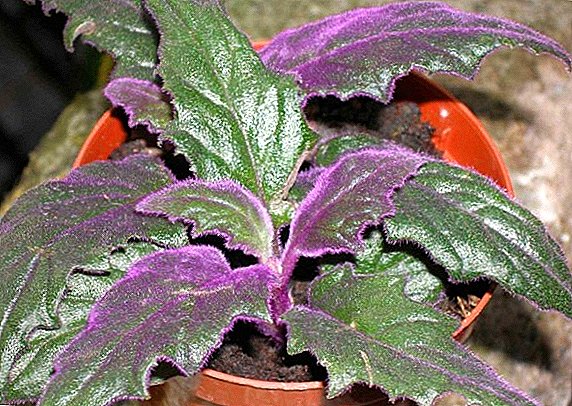
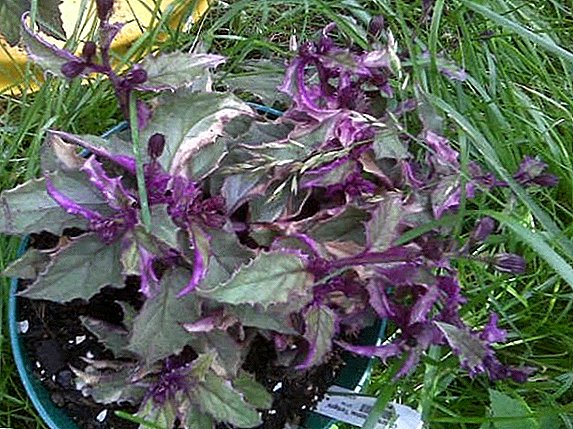
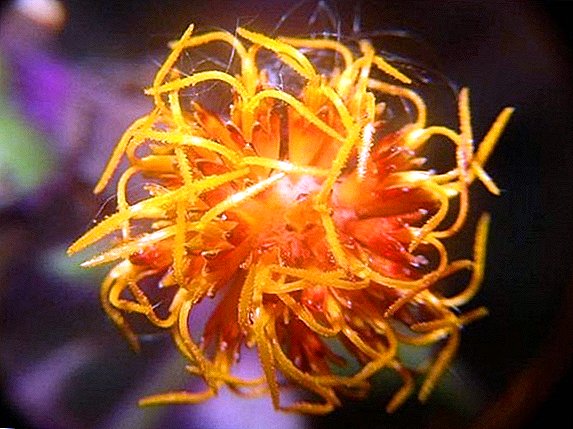
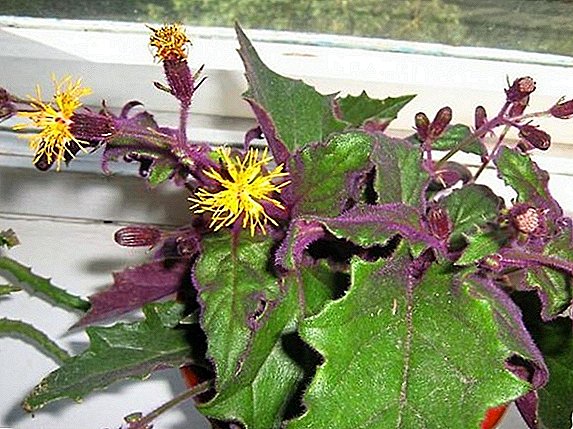
Home care
Actions after purchase and pruning
So that the shrub does not die immediately after purchase, it is necessary to moisturize its root system well. The main reason for the death of guinuria is drying, so accompany the adaptation in the new conditions with good watering.
It is difficult to say that pruning is required. It can be done in order to give the bush superfluous pomp, but the process is not mandatory.
Attention: flowers are not only inconspicuous, but also exude an unpleasant odor. They can also be deleted.
Growing and watering
Watering should be more moderate. Particular attention should be paid to soil moisture during warm periods. In winter, it is enough to water every other day or every couple of days.
Important: despite the love of the root system for moisture, the leaves and flowers do not need watering.
If you are going to grow "Ginuru" at home, find a medium sized pot. It is desirable to install plastic supports in it, which will help keep the bush in the desired shape. You can seat in any soil, based on peat. The drainage layer is not required, but will not be superfluous. His role can play a layer of broken bricks.
Attention: nutrition should be moderate, so use half the concentration of the vitamin complex in the summer once every two weeks, and in the winter once a month.
Planting and transplanting
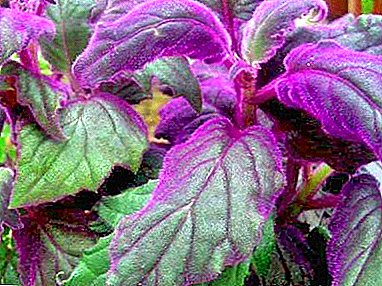 If you are going to plant on the street, look for a place where the bush will have a natural or artificial support.
If you are going to plant on the street, look for a place where the bush will have a natural or artificial support.
Well, if there is a water source nearby, as in a dry climate ginura will be hard.
Transplantation may be required only if you do not rejuvenate the plant.
The root system does not have a rapid development, but if the bush has grown strongly, pick up a large pot.
It is not recommended to grow Guinura for too long without rejuvenating it.
The maximum life cycle without a rejuvenation process is two years. It is advisable to update the bush every year in the April or May period, separating young shoots.
Reproduction and content temperature
Reproduction is carried out in two ways - seeds and cuttings in the form of tops. The seed breeding process is devoid of tricks, but when dividing by cuttings, you need to carefully cut off the top shoot about ten centimeters in size, dip it in the root stimulator and plant it in the soil. The stalk should be covered with polyethylene for two weeks.
The approximate temperature at which you need to grow "Ginuru Orange" - not less than sixteen and not more than twenty-five degrees.
Lighting
"Gynura" responds positively to sunlight, but it is necessary to accustom it to it gradually. It is advisable to have a pot at home near the east window. During periods of activation of the sun's rays, curtain the window with a translucent fabric so that the leaves are not affected by burns.
Benefit and harm
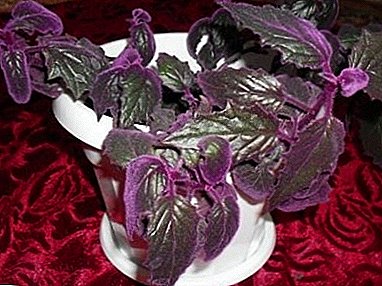 Gynura is poisonous, though not significantly.
Gynura is poisonous, though not significantly.
In the presence of wounds and cuts on the hands, it is desirable to care for shrubs in protective gloves.
For many, the smell of a flower is irritating and allergenic, so if you are intolerant of inflorescences, it is worth getting rid of.
Like many other plants, ginura well cleans the air. She will rid him of toxic substances.
Diseases and pests
When growing, you may encounter such problems:
- Leaves dim, missing bright purple hairsbut at the same time growth does not worsen. Most likely, in the room problems with lighting. Try to have more light;
- The leaves are dull, but ginura weakens. This is a sign of the need for an update. It is necessary to separate the top as soon as possible in order to rejuvenate, since there is no point in growing an old bush;
- There were dark spots on the leaves. Most likely, you carelessly watered the soil and touched the leaves;
- The leaves are blackened and deformed. The reason - the combination of their wet and solar influence. Do not allow wet leaves to remain in sunlight.
Guinur may be attacked by such pests:
- Aphid. After its influence, the leaves can deform and turn yellow, and also differ in a sticky layer. Try to wash the plant and wipe dry. If the infection is very severe, apply a reedroom or insecticide.
- Spider mite It forms a cobweb on plants and disrupts the process of their development. The method of getting rid of the parasite is the use of Actellic (ten drops per half liter of water).
Ginura orange - a combination of beautiful shades and simple rules of care
The aesthetic qualities of “Ginura Orange” are a reason to acquire it. The union of orange flowers and green leaves with a purple edge looks great.
In exchange for its beauty, the shrub will not require much time for you to care, because it is unpretentious.


